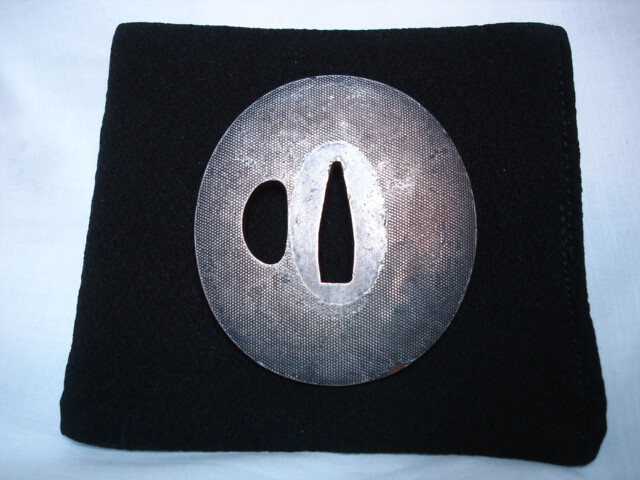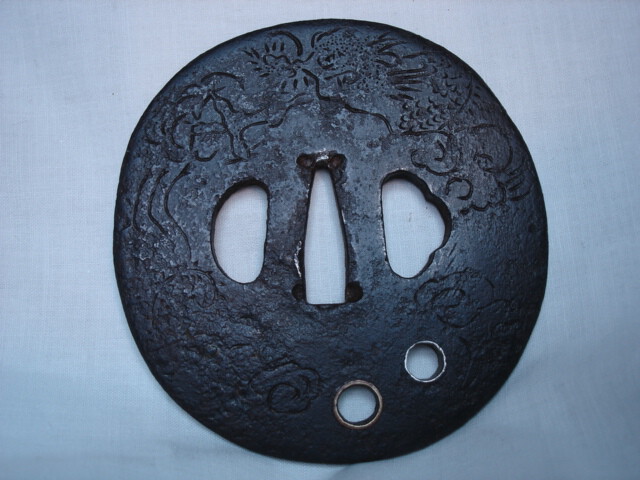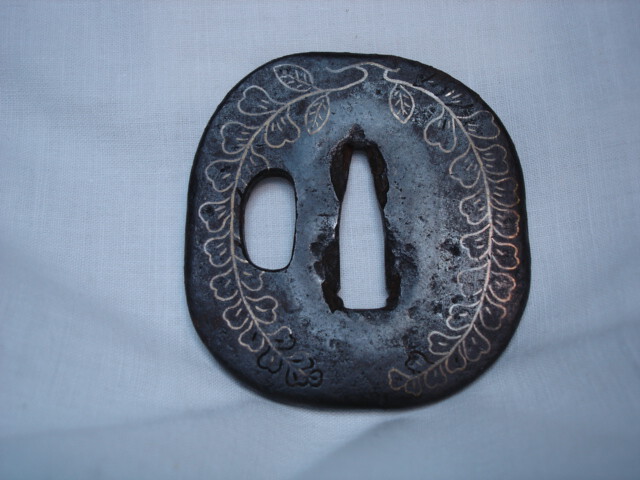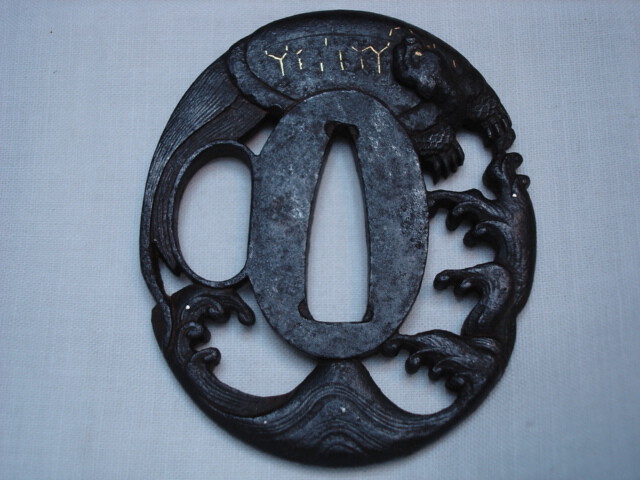-
Posts
14,272 -
Joined
-
Last visited
-
Days Won
275
Content Type
Profiles
Forums
Events
Store
Downloads
Gallery
Everything posted by Bugyotsuji
-
Wasn't there a thread near here somewhere mentioning Tsuba for Naginata/Nagamaki? Well, I have what was described as a Nagamaki Tsuba, and was going to post it up there, but despite running a search I've completely lost the plot!
-
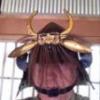
This Week's Edo Period Corner
Bugyotsuji replied to Bugyotsuji's topic in General Nihonto Related Discussion
Peter, look forward to seeing the pics, and then perhaps someone may be able to help. Had a long chat with a friend in antiques today, Ian, about the lid/tray. He agreed with you and said it is definitely old, and probably a family heirloom; a Hiro-buta, 広蓋 which literally means a 'wide lid'. It shows evidence of relacquering, which suggests someone tried to take good care of it. Apparently it was placed on the floor outside the bathing quarters where garments (kimono) were laid into it; the lip kept all in order. He said you could not make one of these for even 100,000 yen today, and the Mon are partcularly expensive to order and have done, something like 10,000 JPY each. He agreed that, sad but true, no-one in Japan today would want to buy such a thing, and recommended that I take it to the West where it can have a new lease on life. Very interesting background to the Shokaku-tsuki Kabuto. Thanks for that. There is a picture of a modern reproduction in one of the links above. (The chap wants to sell it, but has no idea what to ask for it!) -

This Week's Edo Period Corner
Bugyotsuji replied to Bugyotsuji's topic in General Nihonto Related Discussion
Thanks Ian. Japanese burial mounds, right? The design looks like it might be for warding off arrows. There appear to be traces of some form of pitch/lacquer coating. Under Shokaku-tsuki Kabuto I found a few pages on Google. They are in Japanese but most contain a nice little illustration of what you were saying. http://www.google.co.jp/search?q=%E8%A1 ... rt=10&sa=N -

This Week's Edo Period Corner
Bugyotsuji replied to Bugyotsuji's topic in General Nihonto Related Discussion
It's quite late (2:10 am) so I may leave the pics up a little longer and sleep on them. Lid/tray cost. Stephen is the closest so far and flies in under the line. Ian's comment includes a suggestion of the same thing. Well done. The dealer asked apologetically for 1,000 yen, and I told him I would think about it... as I didn't want to carry it around the market. It was absolutely filthy. When I came back it was still there, and he apologized again for the weight. I showed it to a collector friend later and he said "Who has room for that in their house?" I imagined my wife complaining and had to agree with him. (She hasn't seen it yet.) Poor thing is embarrassingly large. As I mentioned in an earlier post, it is a Kiri Mon, but it's called Saga-kiri Mon, and in Saga in Kyoto there is also the Saga Kiku, with the imperial 16 petals. There was an Emperor Saga, and a Saga Genji among other famous names. It cleaned up wonderfully, but unfortunately it's been pretty battered at some time in its life. Are we rescuing history here? A box lid? Interesting. As to the Shokaku-tsuki hachi, Ian, do you know if the sound Sho- is short or long? I wonder what the kanji are? Need to spend some more time looking it up. The chap who has lent it to me is going to float it in the dealer's auction this weekend, and he wanted to know what we thought of it. I asked if I could borrow it for a few days and ask around. He said fine. He's either playing me, or he really doesn't know. I know that he has links to the Chinese antiques market and to people who make 'fake' antiques, but he also digs up some amazing genuine finds too, so really anything is possible. Thanks for your thoughts, though, Ian. -

This Week's Edo Period Corner
Bugyotsuji replied to Bugyotsuji's topic in General Nihonto Related Discussion
Come on, all you good folks out there! How much did this cost? (Brian is disqualified because he knows my Scottish nature.) -

This Week's Edo Period Corner
Bugyotsuji replied to Bugyotsuji's topic in General Nihonto Related Discussion
And a wee shot of the 'tray'. I had a look 'underneath', Ian, but it looks like the slidy bottom of a lacquer tray... The whole measures 92 cm by 55 cm. (I have placed a fairly large Tsuba, 8.6 cm x 8.4 cm) on the surface for size reference.) Again, will erase most ASAP for bandwidth. After some restoration, this is how it is now looking. See below: -

This Week's Edo Period Corner
Bugyotsuji replied to Bugyotsuji's topic in General Nihonto Related Discussion
Ian, I'm going home in a minute, so I'll get the trusty camera out. I say a tray, because the lips (edges) point upwards and not downwards. Are you suggesting that the 'bottom' might actually be the top, and the Mon might be only on the inside of the 'lid'? (It's a large rectangular thing, BTW)? The helmet has four nail holes in the top, and was displayed when found nailed upside down on a wooden base apparently. Thanks for the feedback, and watch this space! Brian, I am going to put a few pics here, but once the comments are out, I will erase the pics completely or to a bare minimum. (Talking of beer, I just quaffed a can of Kirin beer with 99% Purine cut, plus added 'wine polyphenols'! ) Pics now deleted. See Google pages on next page of this thread for illustrations -

This Week's Edo Period Corner
Bugyotsuji replied to Bugyotsuji's topic in General Nihonto Related Discussion
No piccies, Peter? :D Two interesting things floated by this week. One is a rusted banded and riveted helmet, one end featuring what looks like the iron-bound prow of a ship. No-one here can decide if it is Japanese, Chinese, Viking, or what. The second object is a massive tray, black lacquer on wood. It is covered in two types of Kamon, which appear to be the Imperial Chrysanthemum and a type of Kiri called the Saga-kiri Mon. (Saga, with these Kanji, is an area of Kyoto.) It has been suggested that the tray was once used for carrying meals from the kitchens of a huge house or castle. Can anyone guess how much I paid for this tray at the Ako Antiques Fair yesterday? Photos of either supplied upon request. -
Ooof..............
-
What are you guessing, Edward?
-

This Week's Edo Period Corner
Bugyotsuji replied to Bugyotsuji's topic in General Nihonto Related Discussion
Don't believe you... -

This Week's Edo Period Corner
Bugyotsuji replied to Bugyotsuji's topic in General Nihonto Related Discussion
You must be right. I went round to the friend's house on the way home and tried pulling this over the long straight one, and it was too tight. Maybe these were invented for rainy days when wearing uchi katana, as the Tsuka would have stuck upwards. Tachi tend to hang down, so a different kind of rain protection might have been in order. -

This Week's Edo Period Corner
Bugyotsuji replied to Bugyotsuji's topic in General Nihonto Related Discussion
One of these perhaps? Green leather. Just found it today, but only recognized what it was from your description last night! :lol: I told him what you said, and the dealer suggested that there was an inner straight sleeve for the Tsuka, then this was pulled on top of that... that is he didn't think that the Kashira would actually stick out. So, I think the jury may be still out on that. -
Hi, that first one looks superficially like one I just posted up... I'm a complete newbie. How would you describe that tsuba? Hi ... Walter? I am a perennial newbie, posting and hoping for comments myself. I have shown this tsuba to a few people but no information was forthcoming. One artisan said the work is not too complicated, but it would be too much effort to make something like this today, and with the price of silver hardly worth the effort. The copper tsuba interior is covered without in silver on both sides and then a fukurin is added internally and externally to cover the seams. It is worked in Nanako. That's about it. Sorry!
-

This Week's Edo Period Corner
Bugyotsuji replied to Bugyotsuji's topic in General Nihonto Related Discussion
Brian, I suspected you might pick up on that! hehehehe So, when are you coming over then? Ian, yes, it is and I can hardly believe it. The under Kote sleeves box originally contained a Tsuba, according to the brushwork on the lid, but that was missing. Now I have put this tsuba into the box in a little black bag, and all is almost right with the world again. :| I wonder if anything has been published on this Mon? I now have three pieces of evidence and some fragmentary written material. A recon trip to Awa might be a possible interim plan. Ray, you are right about the two crosses, and the hitsu ana designs do indeed look suspiciously like a priest's hat. Perhaps we can say that this tsuba is not an example of Kakuri Kurisutan/Kurishitan, but from an earlier age when there was no need to hide anything. -
Well, what you save on the hotel by staying here (wife being amenable) you could use at the flea markets! Besides, antique prices are depressed nowadays, as long as you don't count JPY in US dollars....
-

This Week's Edo Period Corner
Bugyotsuji replied to Bugyotsuji's topic in General Nihonto Related Discussion
There were three of these, but on my way home with my treasures, a friend took one off me, ...so now there are two. One is Edo, the other is probably WWII. Both seem in good nick, soft leather. -

This Week's Edo Period Corner
Bugyotsuji replied to Bugyotsuji's topic in General Nihonto Related Discussion
Sorting through boxes and boxes of tsuba, fuchi, kashira, menuki etc. today in a warehouse and discovered this little wakizashi tsuba. 6.5 x 6.9 cm. 0.4 at the seppa dai, 0.35 @ mimi. Can you see what is special about it. (Well, special to me anyway. No-one else seemed to notice... :lol: ) -
I think I might be going slightly mad. Tsuba by tsuba, the box has been filling up. What am I going to, or better still what is my wife going to do with things I have collected over the months and years? A friend told me today that there are three kinds of collector, viz: A) Those who buy something and then shut themselves in a closet with a light and magnifying glass and gloat over it. B) Those who buy and get pleasure from showing everyone what they have bought. C) Those who find pleasure in buying but as soon as they get home become bored, so they then find pleasure in selling it. Am I B) then? Anyway, as a kind of catch up, here are some of the recent additions to the box. The Nanako silver on copper Wakizashi tsuba with the chip I found a week ago. The rest assembled themselves today. One of them was a really exciting surprise for me, for personal reasons; I will post it over in this week's Edo Period corner. PS Shots of just one side, out of concern for bandwidth. Any reverses upon request.
-

What is the Best Oil for Japanese Swords??
Bugyotsuji replied to Dino's topic in General Nihonto Related Discussion
Talking with a NBTHK teacher last night and he was saying he stopped using Choji oil several years ago because it oxidizes. He only uses "silicon oil", whatever that is, even on museum and top quality swords. He did say that if you do make the swtchover, be careful not to mix the two oils. He also mentioned as a regretful afterthought that centuries' exposure to residual clove oil is a key ingredient to giving the Nakago its present character. -
Mmmm... nice finds, Guido.
-

This Week's Edo Period Corner
Bugyotsuji replied to Bugyotsuji's topic in General Nihonto Related Discussion
Before using any of Ian's magic ammonia solution, here is an illustration of the cleaning process to date. One side shows the Hasami-bako virtually untouched. The other side is after many hours of hard work. Sure it looks scrappy, but there is a warmth in it that is not really visible in the photo... (BTW, please ignore the top as that was an earlier experimental attempt.) -
Hi there, ... perhaps there are too many things to address here, so people have been unable to answer. The first thing is that the photos are too small (for me anyway) for any consideration to be made. The reason for this is either you have just appeared and as a newbie do not yet have full facility usage, or that you have been unable to strike a happy medium with the photos. Which is it, I wonder? Have you tried using a hosting site with links, which would cut down on bandwidth usage? Secondly there is a rule here about signing your posts with a real name. Once you get used to this, it becomes frustrating if people arrive with no name. Thirdly, there is a hint in your post, ie 'multipics' that there is a large volume of pics. Perhaps people are shying away from being asked to get involved in potentially heavy work by someone appearing out of the blue? Hoping that the above comments will help to get some kind of ball rolling for you.
-
Yes, the seated figure could be Lui Bei, not Kong Ming. There were three who swore an oath in the garden, but in the illustration only two left, possibly then after Lord Guan was killed? Is it the swearing of the oath and the idea of loyalty to the lord? Or if they are Kong Ming and Zhang Fei, they could possibly represent the two military qualities of raw courage, and clever tactics. Since it's an illustration on a Kozuka, then the latter might make sense, as two ancient virtues for the samurai. (?)
-

This Week's Edo Period Corner
Bugyotsuji replied to Bugyotsuji's topic in General Nihonto Related Discussion
Well, to clarify a little, it says nothing apart from what I wrote earlier: on the top of the lid it says that they are sleeves for wearing underneath the Kote armour/armor.









